Europe Syngas Market Size
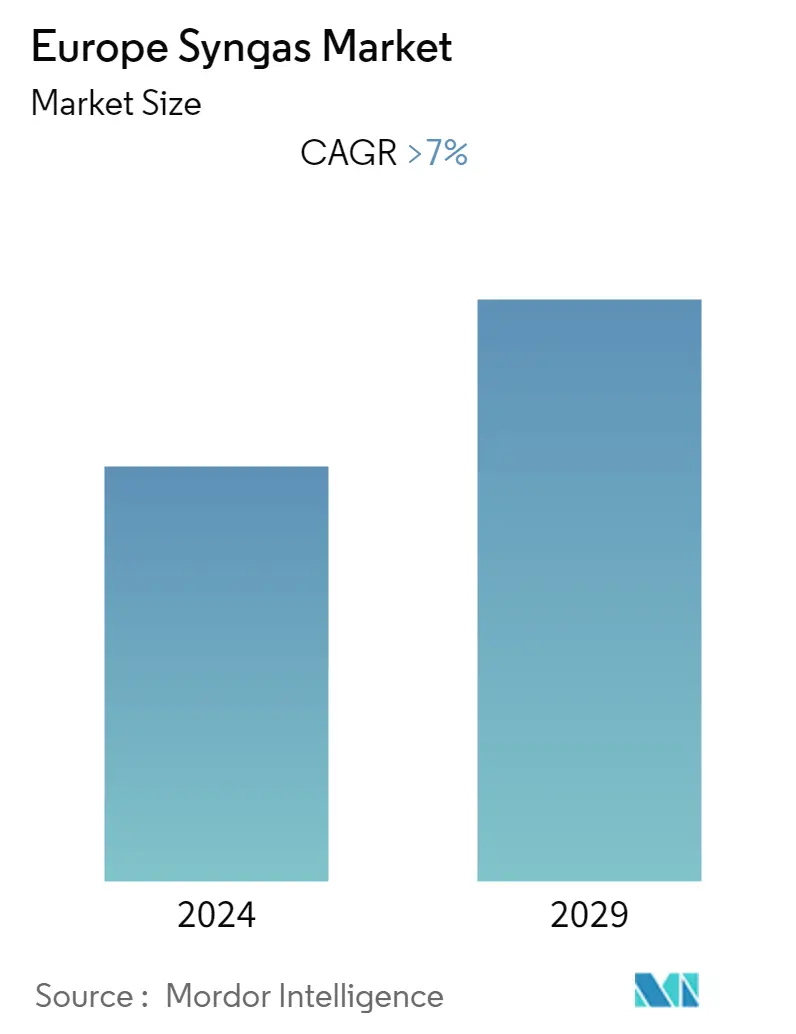
| Study Period | 2019 - 2029 |
| Base Year For Estimation | 2023 |
| Forecast Data Period | 2024 - 2029 |
| Historical Data Period | 2019 - 2022 |
| CAGR | 7.00 % |
| Market Concentration | Low |
Major Players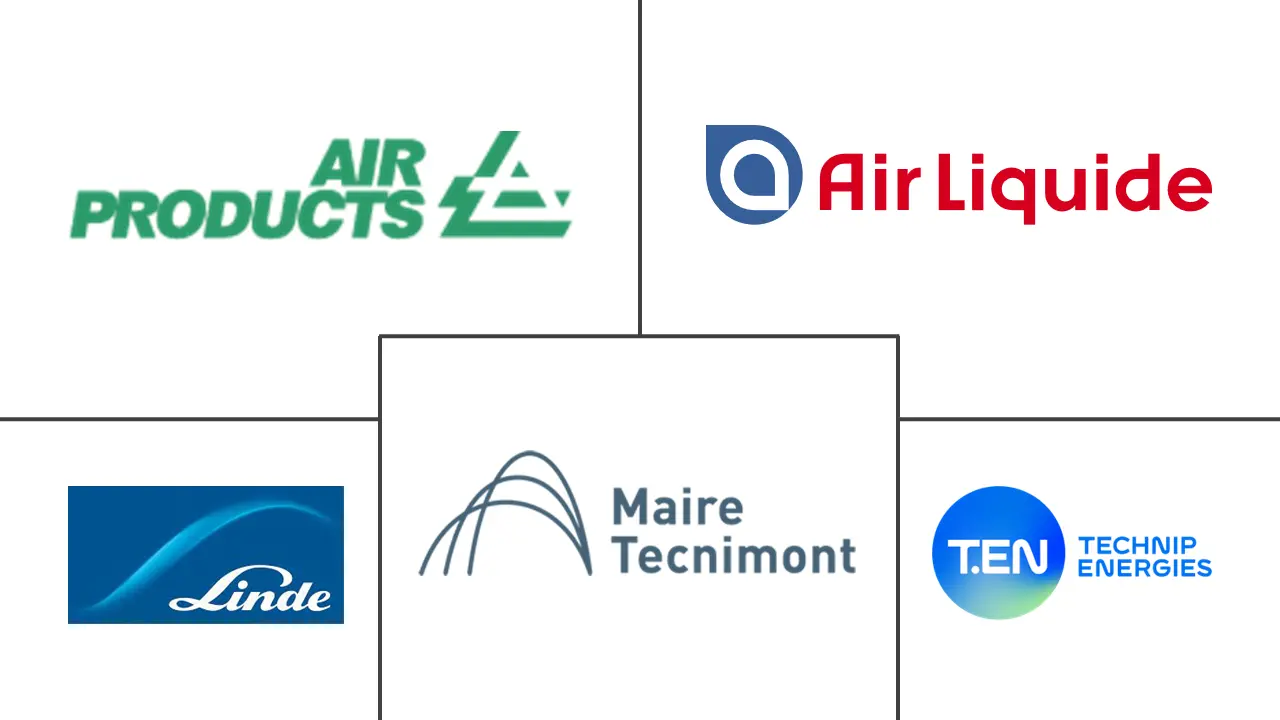
*Disclaimer: Major Players sorted in no particular order |
Europe Syngas Market Analysis
The Europe syngas market is estimated to record a significant growth, at an estimated CAGR of over 7%, over the forecast period.
The COVID-19 pandemic had a substantial negative impact on the European economy. The COVID-19 outbreak presented a challenging industrial arena for the Europe syngas market as it slowed down demand from key end-user industries due to the lockdown measures. Currently, the market has recovered from the pandemic and is growing at a significant rate.
- Over the short term, feedstock flexibility for syngas production and growing demand for electricity are expected to drive the market during the forecast period.
- However, the high capital investment and funding is likely to hinder the market's growth.
- Nevertheless, the development of underground coal gasification technology is likely to create opportunities to the market growth in the future.
- Germany is expected to dominate the market and is also expected to witness the fastest CAGR during the forecast period.
Europe Syngas Market Trends
Ammonia Segment to Dominate the Market
- Syngas is a byproduct of the industrial synthesis of ammonia and fertilizer. Throughout this process, methane (from natural gas) reacts with water to produce carbon monoxide and hydrogen (from natural gas) reacts with water to produce carbon monoxide and hydrogen. The gasification process is used to transform any carbon-containing substance into longer hydrocarbon chains.
- Through the Haber-Bosch process, syngas can be turned into ammonia, which is a common part of fertilizers. During this process, nitrogen from the air is mixed with hydrogen from the syngas to make ammonia, which can then be used to make different kinds of fertilizers.
- Using syngas as a source of raw materials to make fertilizer has a number of advantages. For example, syngas can be made from a number of different materials, which gives companies more options and makes them less reliant on a single raw material. Also, making syngas from biomass by gasifying it can help cut down on greenhouse gas emissions compared to making fertilizer from fossil fuels.
- Ammonia is an important fertilizer in Europe, used to provide essential nitrogen to crops. Europe is one of the world's top agricultural exporters. According to Eurostat, Europe exported USD 208.8 billion in agricultural products in 2021, a 6.3% rise over the previous year. In 2021, the United Kingdom was both Europe's largest export destination for agricultural products and the second largest origin of Europe's imports, just behind Brazil.
- In 2021, the value of fruits and vegetables produced in the EU was over USD 65 billion, accounting for over 14% of the total value of agricultural goods and services produced in the EU. Switzerland was the largest export destination for the EU's fruit and vegetables.
- All the factors listed above are expected to drive the ammonia segment, enhancing the demand for syngas in Europe during the forecast period.
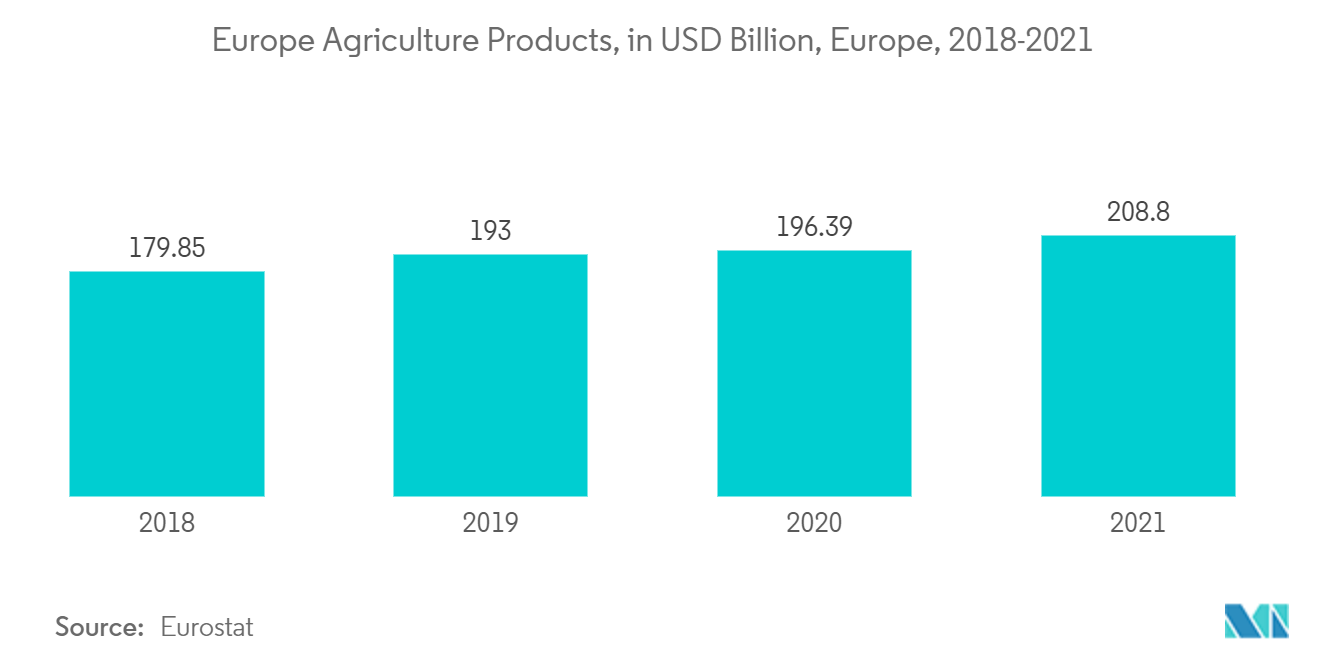
Germany to Dominate the Market
- Germany has minimal domestic oil production, equivalent to around 2% of oil consumption. However, the refining operations in the country are some of the largest in the world.
- Increasing investments in refineries is another factor that is estimated to further boost the consumption of syngas in the country.
- Additionally, Ineos announced plans to invest in two petrochemical plants, with Germany being one of the locations. However, the location is not yet finalized. This, in turn, is expected to boost the demand for syngas in the country.
- The chemical industry in Europe is constantly engaged in developing new chemicals. Geographical location and advanced infrastructure are some of the key reasons why many players choose Germany as their base.
- Germany is a major producer and exporter of fertilizers, particularly ammonia-based fertilizers. The country is home to several significant chemical businesses that specialize in fertilizer manufacture, and its ammonia-based fertilizers are in high demand both domestically and internationally. According to Eurostat, fertilizer exports from Germany in 2021 were valued at USD 1,280.35 million, a 38.4% increase over the previous year.
- In the chemical industry, syngas is used to make chemicals and fuels. To make syngas, coal, petroleum coke, and biomass are turned into gas. In the chemical business, syngas is used to make methanol, ammonia, and hydrogen. Through the "gas-to-liquids" (GTL) process, carbon monoxide and hydrogen react to turn syngas into methanol. Methanol can be used to make formaldehyde, acetic acid, and other things.
- Syngas is both a fuel and a raw material. It can be used to heat boilers and heat exchangers in chemical plants and for other high-temperature industrial uses. Germany is the biggest exporter of chemicals in Europe. According to Eurostat, Germany sent 129.19 billion dollars worth of chemicals out of the country in 2021.
- Increasing power generation in the country is boosting the demand for syngas. The power generation from natural gas, petroleum gas, hard coal, and lignite accounts for a major share of almost 46% of the total power generation in Germany.
- All the above mentioned factors are expected to augment the demand for syngas in the region over the coming years.
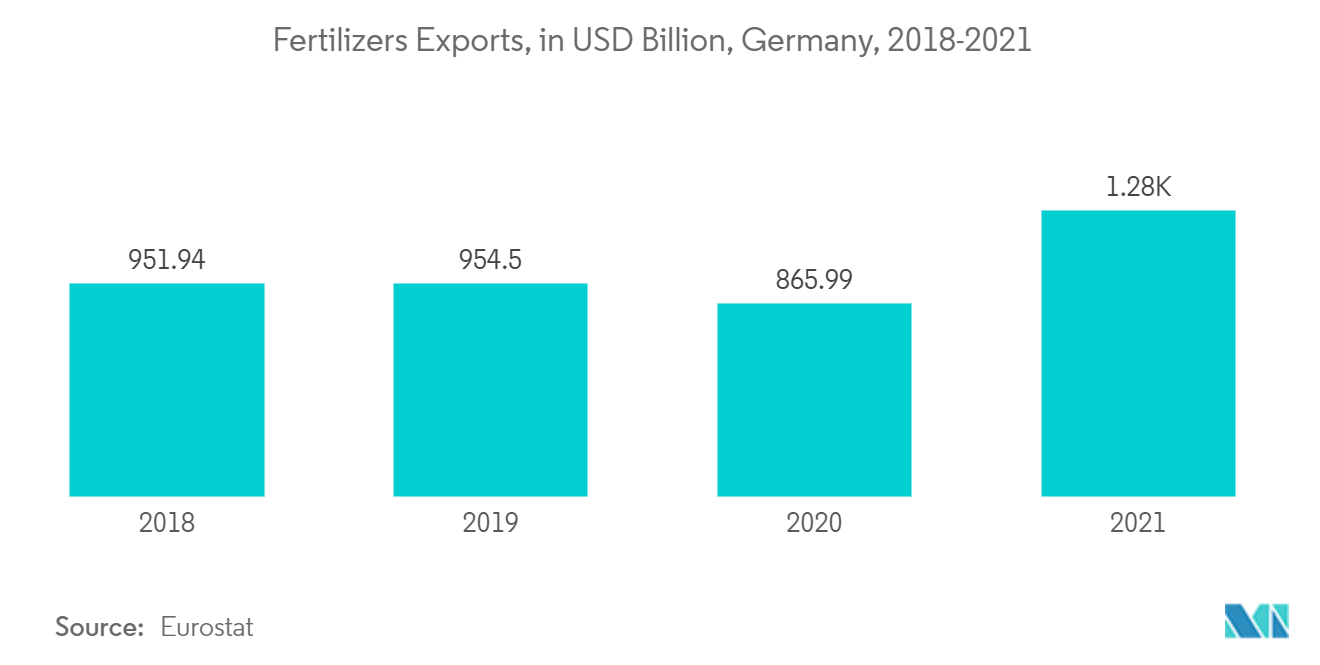
Europe Syngas Industry Overview
The European syngas market is fragmented in nature with the presence of a very few large-sized players and a large number of small players operating. Some of the major companies are Air Products and Chemicals, Inc., Linde plc, Air Liquide, Technip Energies NV, and Maire Tecnimont SpA, among others (in no particular order).
Europe Syngas Market Leaders
-
Air Products and Chemicals, Inc.
-
Linde plc
-
Air Liquide
-
Technip Energies NV
-
Maire Tecnimont SpA
*Disclaimer: Major Players sorted in no particular order
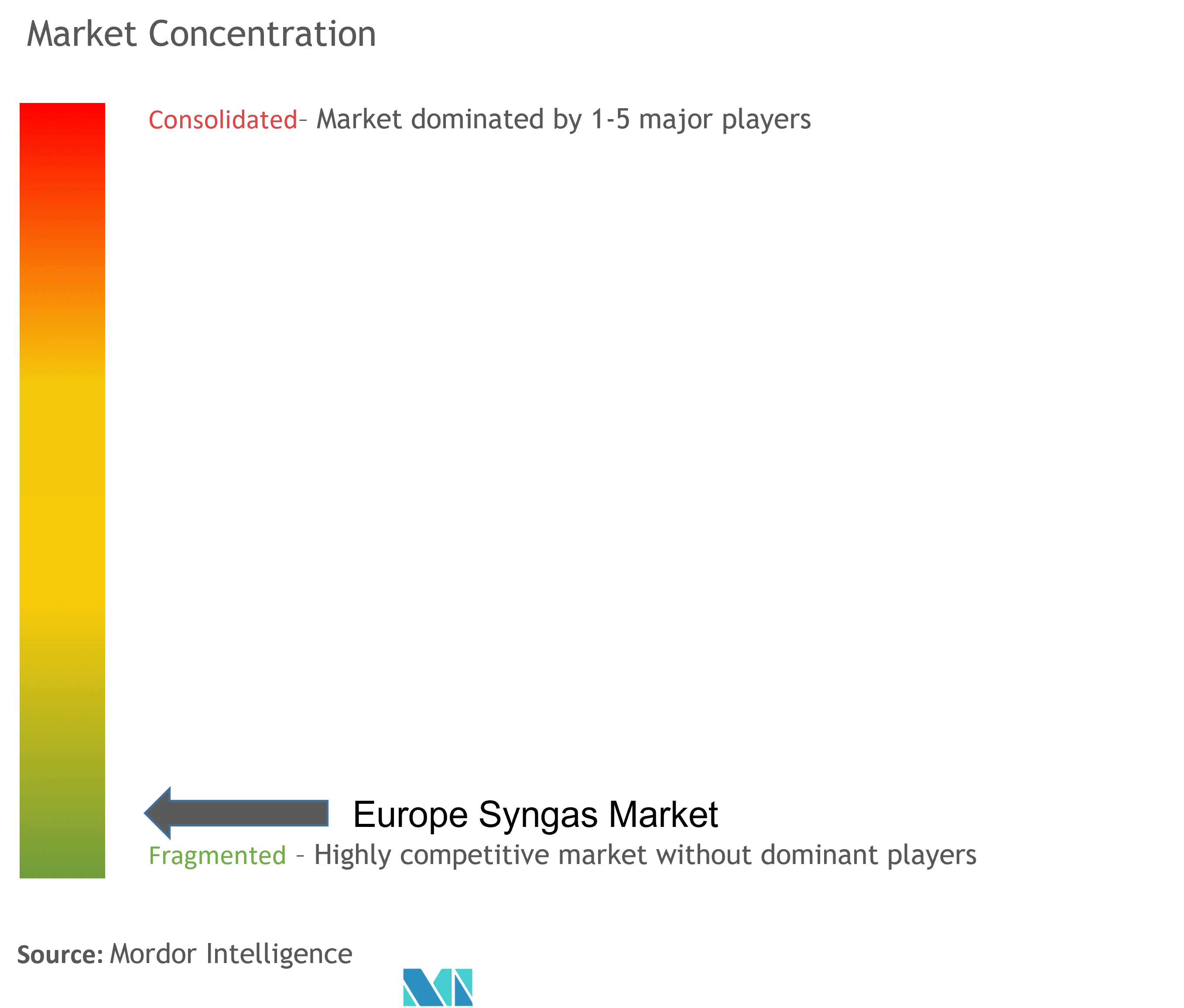
Europe Syngas Market News
- July 2022: Maire Tecnimont SpA announced that NextChem was awarded a contract by Storengy to study waste wood and solid recovered fuel conversion plant to produce biomethane in France. NextChem will be responsible for the engineering services and cost estimating for the syngas purification, methanation unit, and methane upgrading.
- May 2022: Maire Tecnimont SpA announced that its main contractor Tecnimont SpA was awarded a project on an engineering, procurement, and construction management (EPCM) for a 3,000 tons per day blue ammonia synloop plus plant. In this plant, ammonia is derived from the oxidation of natural gas. The plant is expected to come online by 2025.
Europe Syngas Market Report - Table of Contents
1. INTRODUCTION
- 1.1 Study Assumptions
- 1.2 Scope of the Study
2. RESEARCH METHODOLOGY
3. EXECUTIVE SUMMARY
4. MARKET DYNAMICS
-
4.1 Drivers
- 4.1.1 Feedstock Flexibility for Syngas Production
- 4.1.2 Growing Demand for Electricity
-
4.2 Restraints
- 4.2.1 High Capital Investment and Funding
- 4.2.2 Other Restraints
- 4.3 Industry Value Chain Analysis
-
4.4 Porter's Five Forces Analysis
- 4.4.1 Bargaining Power of Suppliers
- 4.4.2 Bargaining Power of Buyers
- 4.4.3 Threat of New Entrants
- 4.4.4 Threat of Substitute Products and Services
- 4.4.5 Degree of Competition
5. MARKET SEGMENTATION (Market Size in Capacity)
-
5.1 Feedstock
- 5.1.1 Petcoke
- 5.1.2 Coal
- 5.1.3 Natural Gas
- 5.1.4 Other Feedstock Types
-
5.2 Technology
- 5.2.1 Steam Methane Reforming
- 5.2.2 Gasification
-
5.3 Gasifier Type
- 5.3.1 Fixed Bed
- 5.3.2 Entrained Flow
- 5.3.3 Fluidized Bed
-
5.4 Application
- 5.4.1 Methanol
- 5.4.2 Ammonia
- 5.4.3 Hydrogen
- 5.4.4 Liquid Fuels
- 5.4.5 Direct Reduced Iron
- 5.4.6 Synthetic Natural Gas
- 5.4.7 Electricity
- 5.4.8 Other Applications
-
5.5 Geography
- 5.5.1 Germany
- 5.5.2 United Kingdom
- 5.5.3 France
- 5.5.4 Italy
- 5.5.5 Spain
- 5.5.6 Rest of Europe
6. COMPETITIVE LANDSCAPE
- 6.1 Mergers and Acquisitions, Joint Ventures, Collaborations, and Agreements
- 6.2 Market Share (%) **/ Ranking Analysis
- 6.3 Strategies Adopted by Leading Players
-
6.4 Company Profiles
- 6.4.1 Air Liquide
- 6.4.2 Air Products and Chemicals, Inc.
- 6.4.3 BASF SE
- 6.4.4 BP p.l.c.
- 6.4.5 General Electric
- 6.4.6 Haldor Topsoe A/S
- 6.4.7 KBR Inc.
- 6.4.8 Linde plc
- 6.4.9 Maire Tecnimont Spa
- 6.4.10 OXEA GmbH
- 6.4.11 Royal Dutch Shell plc
- 6.4.12 Sasol
- 6.4.13 Technip Energies NV
- *List Not Exhaustive
7. MARKET OPPORTUNITIES AND FUTURE TRENDS
- 7.1 Development of Underground Coal Gasification Technology
Europe Syngas Industry Segmentation
Syngas, also known as synthesis gas, is a complex mixture of molecules that includes hydrogen, methane, carbon monoxide, carbon dioxide, water vapors, various hydrocarbons, and condensable chemicals. It is the primary byproduct of gasification and high-temperature pyrolysis of biomass, residues, and wastes.
The Europe syngas market is segmented by feedstock, technology, gasifier type, application, and geography. By feedstock, the market is segmented into petcoke, coal, natural gas, and other feedstock types. By technology, the market is segmented into steam methane reforming and gasification. By gasifier type, the market is segmented into fixed bed, entrained flow, and fluidized bed. By application, the market is segmented into methanol, ammonia, hydrogen, liquid fuels, direct reduced iron, synthetic natural gas, electricity, and other applications. The report also covers the market size and forecasts for the European region's syngas market. For each segment, the market sizing and forecasts have been done based on volume (capacity in million metric normal cubic meters per hour).
| Feedstock | Petcoke |
| Coal | |
| Natural Gas | |
| Other Feedstock Types | |
| Technology | Steam Methane Reforming |
| Gasification | |
| Gasifier Type | Fixed Bed |
| Entrained Flow | |
| Fluidized Bed | |
| Application | Methanol |
| Ammonia | |
| Hydrogen | |
| Liquid Fuels | |
| Direct Reduced Iron | |
| Synthetic Natural Gas | |
| Electricity | |
| Other Applications | |
| Geography | Germany |
| United Kingdom | |
| France | |
| Italy | |
| Spain | |
| Rest of Europe |
Europe Syngas Market Research FAQs
What is the current Europe Syngas Market size?
The Europe Syngas Market is projected to register a CAGR of greater than 7% during the forecast period (2024-2029)
Who are the key players in Europe Syngas Market?
Air Products and Chemicals, Inc., Linde plc, Air Liquide, Technip Energies NV and Maire Tecnimont SpA are the major companies operating in the Europe Syngas Market.
What years does this Europe Syngas Market cover?
The report covers the Europe Syngas Market historical market size for years: 2019, 2020, 2021, 2022 and 2023. The report also forecasts the Europe Syngas Market size for years: 2024, 2025, 2026, 2027, 2028 and 2029.
Europe Syngas Industry Report
Statistics for the 2024 Europe Syngas market share, size and revenue growth rate, created by Mordor Intelligence™ Industry Reports. Europe Syngas analysis includes a market forecast outlook to 2029 and historical overview. Get a sample of this industry analysis as a free report PDF download.



